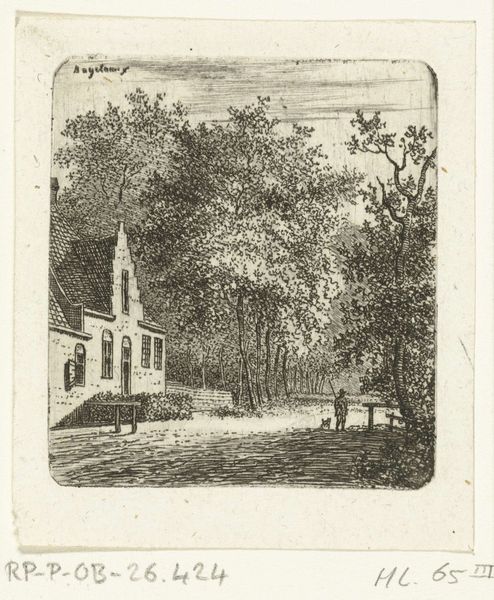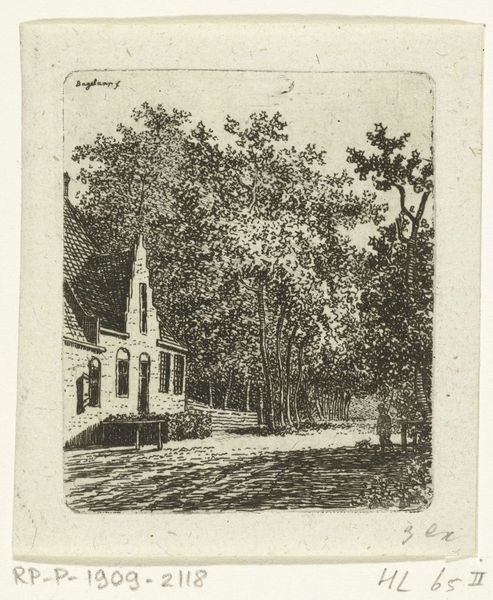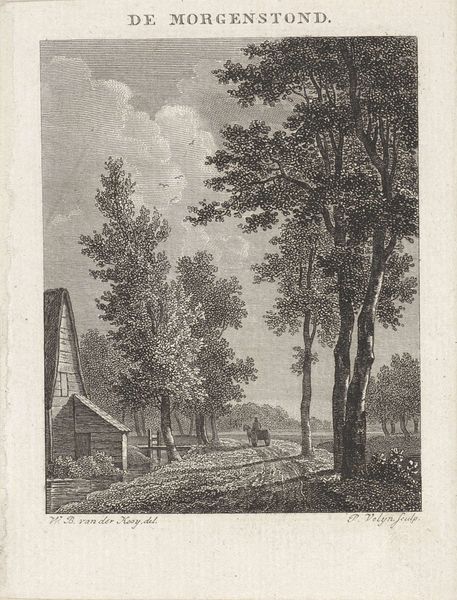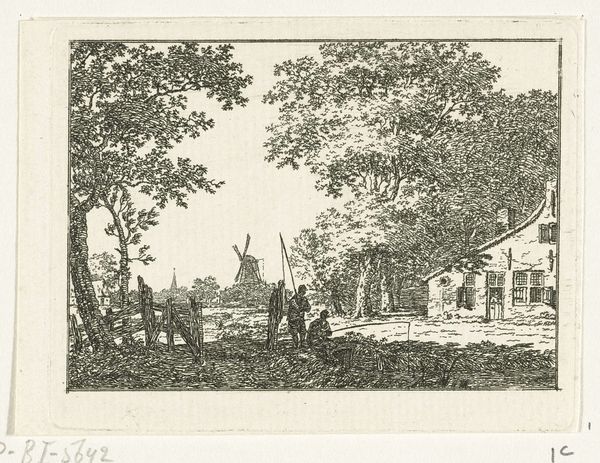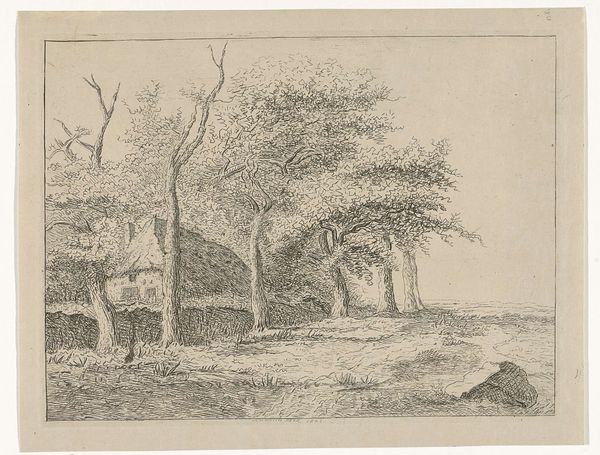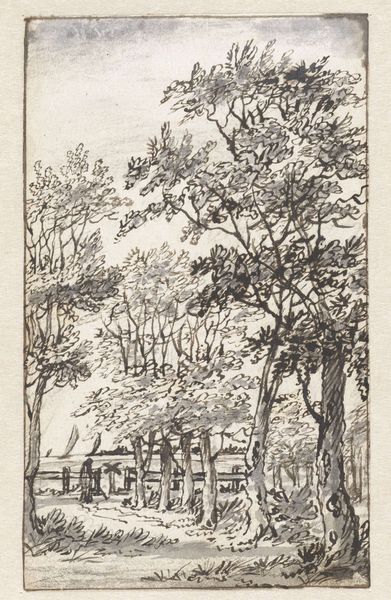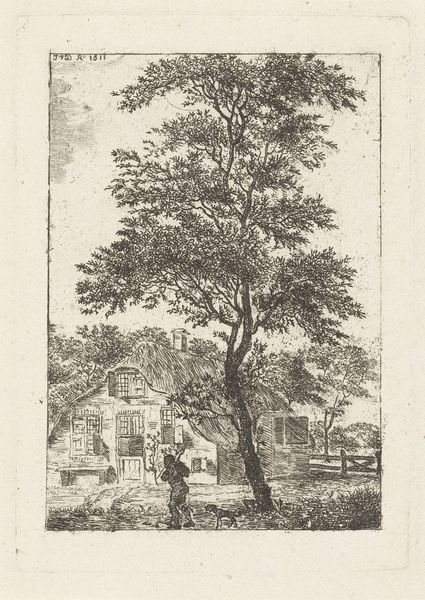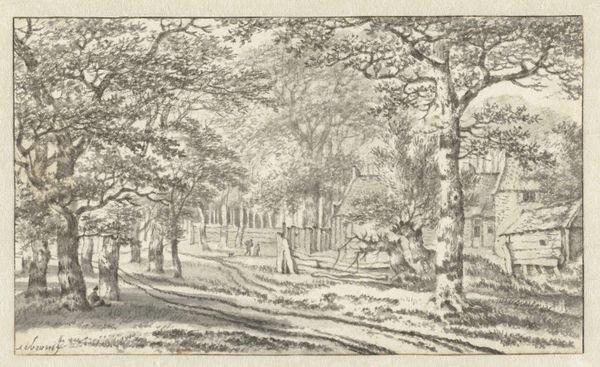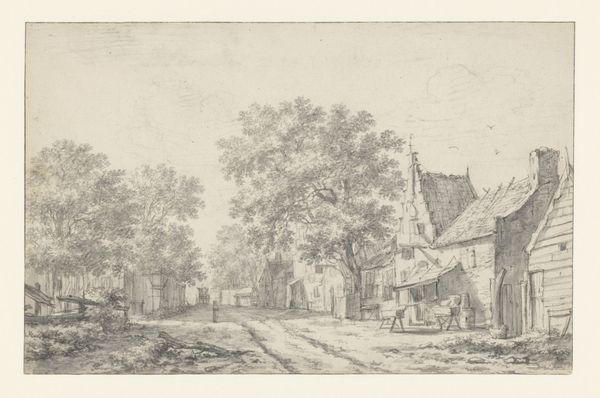
print, etching
# print
#
etching
#
landscape
#
etching
#
genre-painting
Dimensions: height 61 mm, width 56 mm
Copyright: Rijks Museum: Open Domain
Ernst Willem Jan Bagelaar created this print – entitled "Wandelaar met hond voor een huis" – with etching in the late 18th or early 19th century. The etching process involves coating a metal plate with a waxy, protective layer, then scratching an image into that layer with a needle. When the plate is dipped in acid, the exposed metal is eaten away, leaving behind incised lines. Ink is then applied to the plate, filling these lines, and the excess is wiped away. Finally, the plate is pressed onto paper, transferring the image. The act of etching, with its reliance on controlled corrosion, mirrors the effects of time on the landscape itself. The scene depicted – a lone wanderer with their dog before a house – is an intimate snapshot, but also speaks to broader themes of human scale and the enduring presence of the natural world. It's a testament to how a humble material and a skilled hand can capture the essence of a place and time, revealing its subtle beauty.
Comments
No comments
Be the first to comment and join the conversation on the ultimate creative platform.
